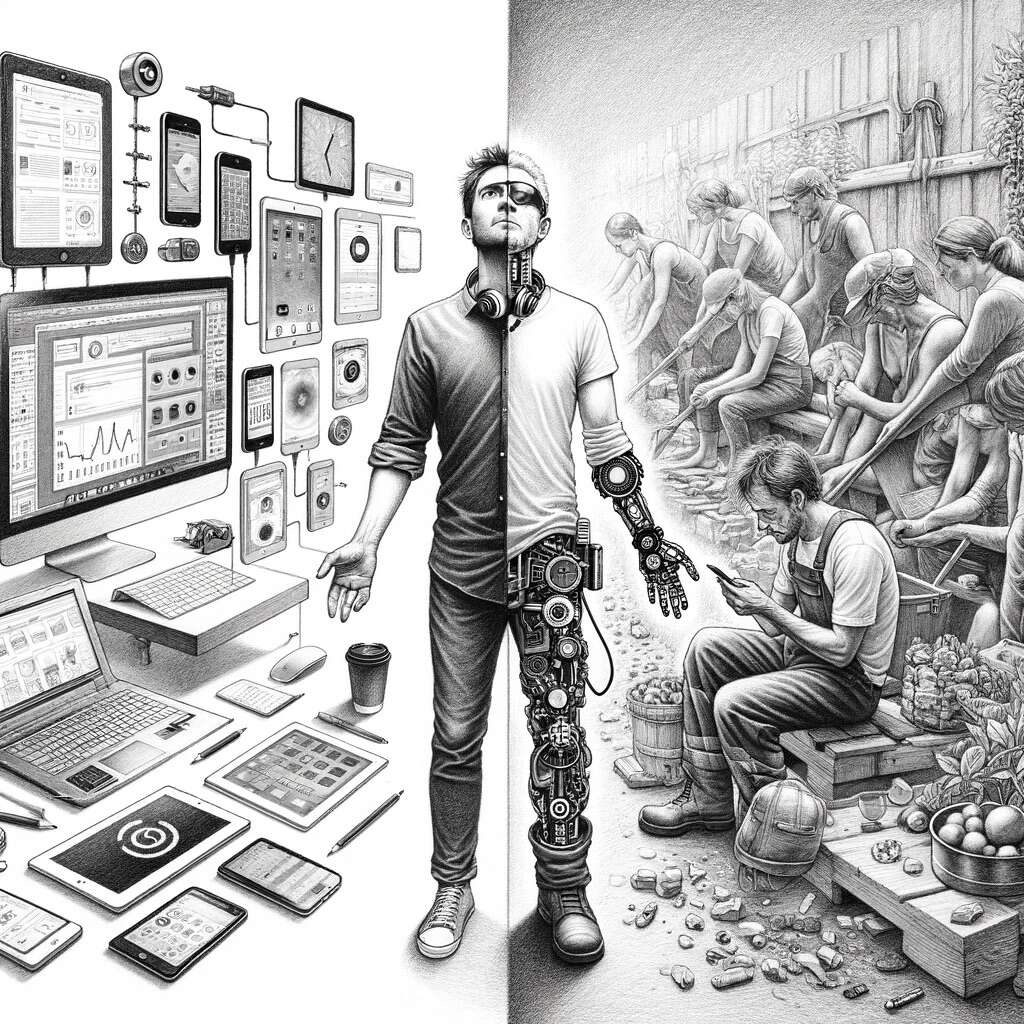As technologists, we spend our lives looking at screens. We go to work and look at screens. We come home and watch other screens. We carry screens with us everywhere. We strap screens to our wrists for the times we can't look at the screens in our pockets. We are surrounded by tech and products, and when we're not it feels foreign.
Working with operations-heavy customers has taught me that we are the exception. Most of the world doesn't work the way we do. Technology and products are afterthoughts in their daily work. And a lot of time it gets in their way rather than helping them. If you want to build products that customers will embrace, you have to build for their entire workflow. You can't build solely for the times they are looking at the screen.
The best example of doing this right is GitHub CoPilot. We think of developers as people who spend all their time at a screen. And we could assume that CoPilot was the result of the hype of AI, and the mandate to add AI to every product. Turns out that both of those assumptions are incorrect. When asked about the thought behind CoPilot, Inbal Shani the CPO of GitHub said, "Throughout the years we have added so much tasks on a single software developer from writing code, writing testing, interacting with people, collaborating with 21 people on every given week, going to meetings, waiting on builds, digging into legacy code, all of that is added to the fact that they need to write code, which is their basic work." In essence, developers are spending less and less time doing their actual jobs. CoPilot was built as a way to do something cool with AI. Rather it was built to solve a problem for developers that had nothing to do with GitHub. CoPilot allows developers to be more effective in the time to have code. It took a problem that had nothing to do with coding and solved it in a way that only it could.
Many of us assume that customers are looking for what we have to offer. In reality, they have enough going on already. Stealing from Lenny, "Marc Andreessen had this great quote that your user's time is already allocated. They're not looking for more apps to download. They already have a plan for the day. Basically, they have things to do. They're not like, "Hmm, what's another iPhone app I'm going to check out right now?" So somehow you have to convince them, "This is worth your time,". Jason Fried shared a similar idea when talking about the development of 37Signal's new calendar product. He highlighted that when you put something on someone's calendar, you are actually taking from them. All our time is already filled. So adding that meeting is actually taking away from people's ability to use their own time. As PMs, we are all fighting this battle. We have to make something good enough and valuable for customers to want to give us their time.
As you build ask yourself: "How does this impact the rest of my customer's day?", "Am I giving them time back or stealing from them?", "Does this provide value beyond the time they are looking at my app on a screen?". The ability to see the entirety of the customer experience and figure out how your product can uniquely improve the experience is an elite skill. It's something I'll be trying to develop in my career. I would love to hear if you have tips on how to make this actionable or where you have seen things play out differently.
